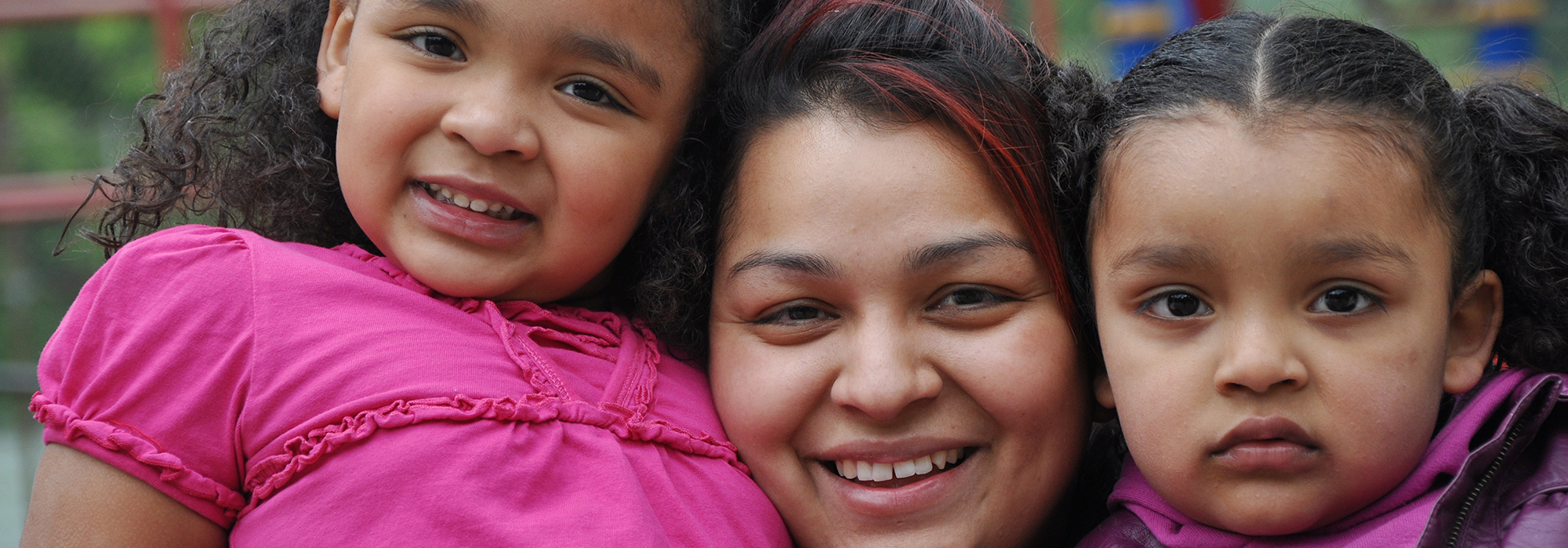In contrast to the PIT Count, the Annual Homeless Assessment Report Part 2 (AHAR Part 2) documents how people use homeless shelter and service programs over an annual basis. It tends to get far less media attention, although the data reveals a great deal that the PIT Count can obscure.
How Many Families Experience Homelessness?
Data from the 2020 PIT Count indicated that, on any given day, approximately 54,000 families resided in a homeless shelter program or in a place unintended for human habitation in 2020. Over the course of that year, according to AHAR Part 2, just over 132,000 families, comprising nearly 417,000 people, experienced a shelter stay as part of a family.
If one were to only look at the one-day count, it would appear as if the number of families experiencing homelessness changed very little between 2019 and 2020 because the number of families homeless on a given day remained approximately the same in both years. However, an examination of the annual data from those two years shows a very different picture.
The AHAR Part 2 annual data indicates that between 2019 and 2020, there was a 25 percent reduction in the number of families newly entering a homeless service program and a 29 percent reduction in families returning to shelter after exiting a homeless service program. Overall, the number of families that resided in a homeless service program declined by 16 percent between 2019 and 2020 as the reduction in entrants were offset by families staying in homeless service programs for a longer period.
What Explains the Reduction?
Pandemic-era supports, such as eviction moratoria and income support (including Economic Impact Payments and Emergency Rental Assistance), likely had a strong positive impact in reducing the number of families entering homeless shelter programs. Poverty also declined by 10 percent. The addition of new resources and housing protection in the hands of families made it possible for more people to stay housed or find alternatives to shelter when housing was lost. Protections, it should be noted, that are now shrinking or have already disappeared.
Shelter access cannot be discounted as playing a factor. Families who might have ordinarily turned to shelter may have been dissuaded by fear of COVID-19. It may also have been harder for families to find shelter when they required it, as some localities reduced shelter beds so they could ensure safe social distancing. Since the length of time families spent in homeless service programs increased between 2019 and 2020, shelter beds turned over less frequently, and fewer families could be served with existing resources.
It is also helpful to consider the impact of homeless service interventions. Beyond eviction moratoria and Emergency Rental Assistance that helped millions of families stay housed, homeless service providers increasingly rely on diversion to help families who do lose their housing find alternatives to entering shelter or experiencing unsheltered homelessness. Pandemic era supports also likely helped many formerly homeless families stay housed, contributing to reduced returns to homeless service programs.
Inequities Exacerbated Between 2019 and 2020
Reductions were not shared equally across racial groups. Families headed by a Black parent comprised 54 percent of all families sheltered, the highest rate in recent years, although they comprise only 12.2 percent of families with children nationally and less than a quarter of families living in poverty.
Between 2019 and 2020, the number of families headed by a white parent that had a stay in a shelter homeless program over the course of a year declined by 20.7 percent and the number of families headed by a parent identified as white and Hispanic sheltered decreased by 19 percent. In contrast, the number of families headed by a Black parent who experienced a shelter stay declined by only 13 percent.
Despite widespread awareness of the disparate impact of evictions and COVID-19 on Black families as well as attention to the need to use resources equitably to prevent homelessness, this expansion of the racial gap points to the need for greater analysis and reform in how resources are being utilized to reduce disparate outcomes.
Examining All Data Sources
There is a lively debate regarding which measure of homelessness is the “right” measure. Existing measures capture different data, and each measure provides useful information that helps us understand the prevalence of homelessness, housing insecurity, and the need for significant increases in affordable housing. Using only one data source will always give you an incomplete picture.
Unfortunately, the data reported out in the AHAR Part 2, which provides useful annual data about the trajectories of people using homeless shelter programs as well as disparities, is not broken out by the state and local level. Perhaps the absence of a more local take contributes to the information being of less interest to the media, and thus less visible, than the PIT count release.
Homeless service programs and system leaders are under enormous strain, so suggesting any additions to the workload right now seems very unkind. But, looking into the future, when preparing submissions to HUD for the AHAR Part 2 Report, it may be valuable for local homeless service system leaders and advocates to consider releasing a local take to the media. What did you learn? What does the annual data tell you that rounds out the picture the PIT count revealed? How might this data inform state and local policymakers and help support the policies we know could end homelessness and promote greater equity in our programs?

